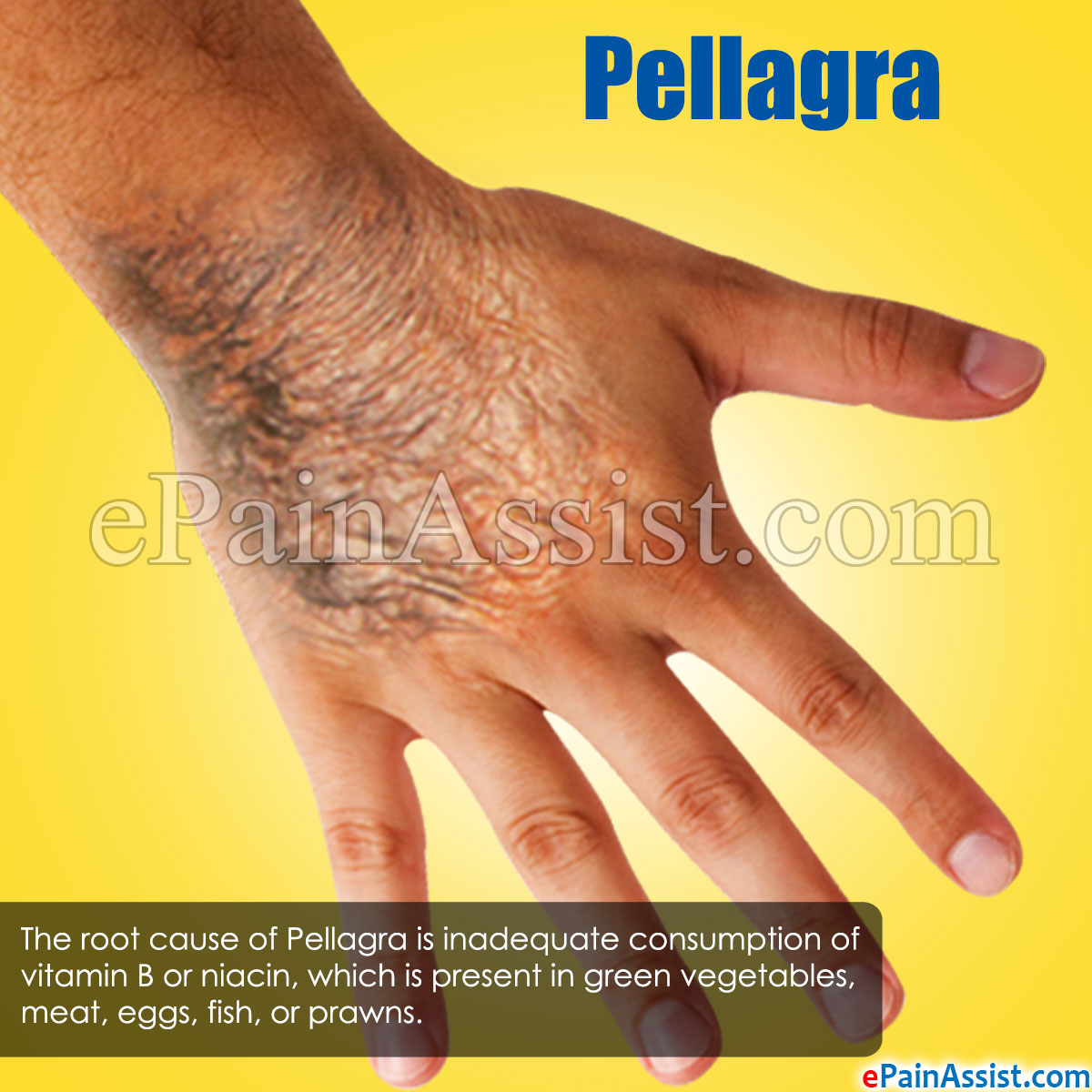How Do We Define Pellagra?
Pellagra is a pathological condition which adversely affects the digestive system, skin, and nerves and causes conditions like dermatitis, diarrhea, and other mental conditions. The most common cause of Pellagra is inadequate niacin in the body whereas some of the causes of Pellagra are conditions related to the digestive tract which causes inadequate absorption of niacin in the body. Another name given to Niacin is nicotinic acid or vitamin B3. In USA, alcoholics are most at risk for developing Pellagra due to inadequate nutrition. Chronic alcohol abuse and not eating enough green leafy vegetables, eggs, meat etc. can cause Pellagra. One more class of Pellagra called secondary Pellagra is caused when there is adequate intake of niacin but the body is not able to absorb the niacin adequately. It is usually caused due to gastrointestinal disorders. The symptoms of Pellagra are variable from individual to individual and can range from mild to severe symptoms. Lifestyle modification is the key for treatment of Pellagra like abstaining from alcohol, eating a healthy diet etc. If Pellagra is not treated in a timely fashion then it may lead to complications like dementia or severe depression which may be difficult to treat.
What Are The Causes Of Pellagra?
The root cause of Pellagra is inadequate consumption of vitamin B or niacin, which is present in green vegetables, meat, eggs, fish, or prawns. Apart from this, alcohol abuse related malnutrition is also a primary cause of Pellagra. Secondary Pellagra is caused due to a disorder of the gastrointestinal tract which affect appropriate absorption of niacin.
What Are The Risk Factors For Pellagra?
Risk Factors For Pellagra Include:
- Alcohol abuse
- Anorexia nervosa
- Digestive system disorders
- Diet low in vitamin B.
What Are The Symptoms Of Pellagra?
Symptoms Of Pellagra Include:

- Abdominal cramps
- Delusional thoughts
- Severe depression
- Diarrhea
- Cognitive problems
- Headaches
- Appetite loss
- Severe fatigue
- Persistent nausea that may be accompanied by vomiting
- Scaly skin lesions
- Weakness.
Some Of The Symptoms Which Might Indicate A Potentially Serious Complication Of Pellagra Are:
- Alcohol withdrawal symptoms
- Suicidal thoughts
- Severe depression and anxiety attacks.
How Is Pellagra Diagnosed?
One of the measures to diagnose Pellagra is to get a detailed diet survey which may detect presence of inadequacy of niacin in the diet. Along with inadequate niacin intake if an individual experiences symptoms described above then Pellagra can be confirmed. Biomechanical indices like checking excretion of niacin products through urine can also confirm Pellagra.
What Are Treatments For Pellagra?
The best way to treat Pellagra is to make significant lifestyle and dietary changes, abstaining from alcohol, eat a diet rich in vitamins, especially vitamin B. The treating physician may also prescribe vitamin supplements which one needs to take as directed and diligently. Apart from this, the underlying cause of Pellagra also needs to be identified and treated appropriately. Some of the complications of Pellagra are dementia and severe depression.

